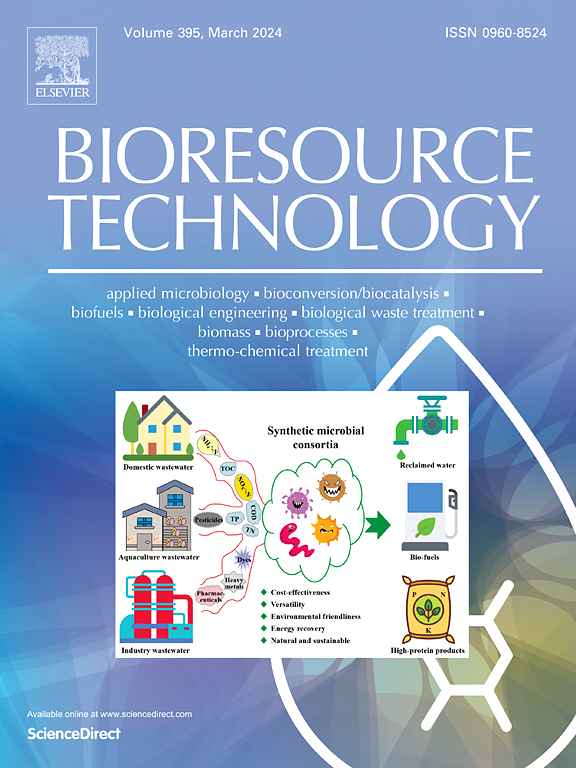Machine learning for predicting and optimizing the performance of a commercial-scale anaerobic digester with diverse feedstocks and operating conditions
IF 9
1区 环境科学与生态学
Q1 AGRICULTURAL ENGINEERING
引用次数: 0
Abstract
The improper disposal of food waste and livestock manure poses significant environmental risks, including nutrient pollution, water contamination, and greenhouse gas emissions. Anaerobic digestion (AD) provides a sustainable pathway for converting organic waste into biogas while reducing environmental impacts. However, optimizing AD performance at a commercial scale remains challenging due to feedstock variability, operational complexity, and time-dependent dynamics. In this study, we analyzed six years of data from a commercial-scale AD system processing 18 types of food and manure waste to develop machine learning (ML) models for predictive analysis and process optimization. Three key outputs, total gas production, methane percentage, and H2S content, were predicted using Random Forest (RF), Artificial Neural Networks (ANN), and XGBoost. RF consistently yielded the highest performance with accuracy of 0.91 (gas production), 0.93 (methane), and 0.91 (H2S). Feature importance analysis revealed that time-series factors (e.g., rolling averages of previous days), pH, temperature, and hydraulic retention time (HRT) significantly influenced model accuracy. Notably, feedstocks such as dairy manure and pineapple waste exhibited strong correlations with both gas yield and H2S fluctuations. Optimization using Particle Swarm Optimization and Simulated Annealing demonstrated the potential to improve biogas production by up to 12 % and reduce H2S levels by as much as 65 % through adjusted operating conditions. These findings highlight the value of ML in not only forecasting AD performance with high accuracy but also in identifying operational strategies to enhance system efficiency and stability. This work provides actionable insights for the data-driven management of commercial-scale AD systems.

用于预测和优化具有不同原料和操作条件的商业规模厌氧消化器性能的机器学习
食物垃圾和牲畜粪便的不当处理会带来重大的环境风险,包括营养物污染、水污染和温室气体排放。厌氧消化(AD)为有机废物转化为沼气提供了一种可持续的途径,同时减少了对环境的影响。然而,由于原料可变性、操作复杂性和时间依赖性,在商业规模上优化AD性能仍然具有挑战性。在这项研究中,我们分析了商业规模的AD系统处理18种食物和粪便废物的6年数据,以开发用于预测分析和流程优化的机器学习(ML)模型。使用随机森林(RF)、人工神经网络(ANN)和XGBoost预测了三个关键产出,即天然气总产量、甲烷百分比和H2S含量。RF的准确度为0.91(产气)、0.93(甲烷)和0.91 (H2S)。特征重要性分析显示,时间序列因素(如前几天的滚动平均值)、pH值、温度和水力停留时间(HRT)显著影响模型的准确性。值得注意的是,牛粪和菠萝废料等原料与产气量和H2S波动都有很强的相关性。利用粒子群优化和模拟退火技术进行的优化表明,通过调整操作条件,可以将沼气产量提高12%,将H2S含量降低65%。这些发现突出了机器学习的价值,不仅在预测AD性能方面具有很高的准确性,而且在确定操作策略以提高系统效率和稳定性方面也具有很高的价值。这项工作为商业规模AD系统的数据驱动管理提供了可操作的见解。
本文章由计算机程序翻译,如有差异,请以英文原文为准。
求助全文
约1分钟内获得全文
求助全文
来源期刊

Bioresource Technology
工程技术-能源与燃料
CiteScore
20.80
自引率
19.30%
发文量
2013
审稿时长
12 days
期刊介绍:
Bioresource Technology publishes original articles, review articles, case studies, and short communications covering the fundamentals, applications, and management of bioresource technology. The journal seeks to advance and disseminate knowledge across various areas related to biomass, biological waste treatment, bioenergy, biotransformations, bioresource systems analysis, and associated conversion or production technologies.
Topics include:
• Biofuels: liquid and gaseous biofuels production, modeling and economics
• Bioprocesses and bioproducts: biocatalysis and fermentations
• Biomass and feedstocks utilization: bioconversion of agro-industrial residues
• Environmental protection: biological waste treatment
• Thermochemical conversion of biomass: combustion, pyrolysis, gasification, catalysis.
 求助内容:
求助内容: 应助结果提醒方式:
应助结果提醒方式:


